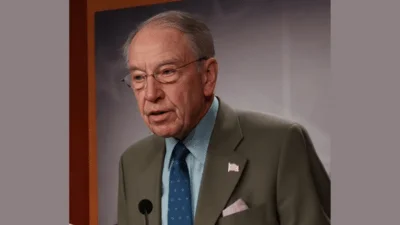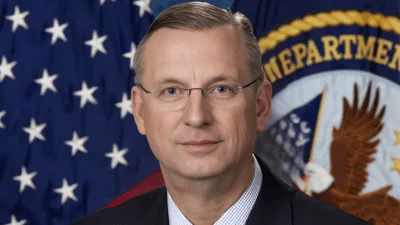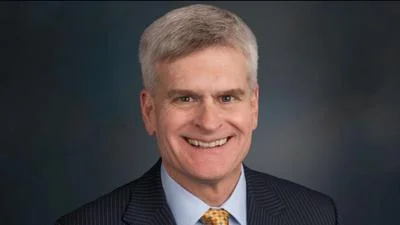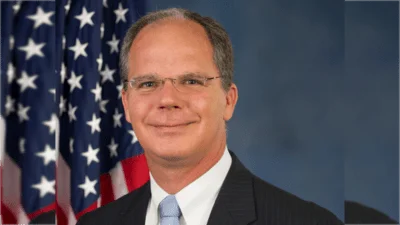Sen. Shelley Moore Capito (R-WV)
Following a letter from U.S. Senator Shelley Moore Capito (R-W.Va.), Ranking Member of the Senate Environment and Public Works (EPW) Committee and 11 of her colleagues, the U.S. Fish and Wildlife Service announced it is delaying the effective date of the final rule to reclassify the northern long-eared bat from threatened to endangered under the Endangered Species Act from January 30, 2023 to March 31, 2023.
The letter expressed concerns to FWS Director Martha Williams about the impact of issuing a final rule listing the northern long-eared bat (NLEB) as endangered on current and future infrastructure projects across the country.
“Many infrastructure projects will require federal agencies and project sponsors to consult with the Service on potential impacts to NLEB and their habitat, even though these projects and developments have little contributing impact to the decline of the species, and most mitigation measures will do little to nothing to combat WNS [white-nose syndrome],” the senators wrote.
“We are deeply concerned that the up-listing of the NLEB, when combined with the current back logs, will impede the historic investment Congress made in the IIJA if flexibility and efficiency are not addressed by the Service prior to the final rule going into effect on January 30, 2023,” the senators continued.
Senators who signed on to Ranking Member Capito’s letter include, Sens. John Boozman (R-Ark.), Bill Cassidy (R-La.), Susan Collins (R-Maine), Kevin Cramer (R-N.D.), Lindsey Graham (R-S.C.), John Hoeven (R-N.D.), James Lankford (R-Okla.), Cynthia Lummis (R-Wyo.), Thom Tillis (R-N.C.), Tommy Tuberville (R-Ala.), and Roger Wicker (R-Miss.).
BACKGROUND:
At a May 2022 hearing with FWS Director Williams, Ranking Member Capito expressed her concerns about the agency’s decision to up-list the NLEB from threatened to endangered, saying, “in the listing re-designation, the Service admits that bat populations are declining due to effects separate and apart from development of infrastructure like roads and transmission lines.”
For more information about the northern long-eared bat, including maps, habitats, and a history of its listing status, click here.
The full letter can be accessed here and below:
Dear Director Williams:
On November 30, 2022, the U.S. Fish and Wildlife Service (USFWS or the Service), under your direction, issued a final rule to list the northern long-eared bat (NLEB) as endangered under the Endangered Species Act (ESA). The NLEB is found in 37 states across the U.S. and according to the final rule, white-nose syndrome (WNS) is the primary factor influencing the viability of the NLEB. WNS is a fungal pathogen that invades the skin of bats. The infection leads to increases in the frequency and duration of arousals during hibernation and eventual depletion of fat reserved needed to survive the winter and results in mortality. WNS alone has caused estimated population declines of 97-100 percent across 79 percent of the NLEB’s range.
The NLEB was originally listed as threatened in May of 2015 with an accompanying rule issued under 4(d) of the ESA. The 2015 4(d) rule focused prohibitions deemed necessary and advisable to provide for the conservation of the threatened species, instead of applying blanket prohibitions that obstruct economic growth and development. With the November 2022 final rule up-listing the NLEB to endangered, the 2015 4(d) rule will be invalidated, leaving countless infrastructure project consultations in limbo.
As we look to implement the historic funding and programs from the Infrastructure Investment and Jobs Act (IIJA), many infrastructure projects will require federal agencies and project sponsors to consult with the Service on potential impacts to NLEB and their habitat, even though these projects and developments have little contributing impact to the decline of the species, and most mitigation measures will do little to nothing to combat WNS. As the Service admits, there are currently “no proven measures to reduce the severity of WNS.” Further, we continue to hear from states and stakeholders that the Service has an increasing back log of consultations that are delaying authorizations and progress on new infrastructure projects. We are deeply concerned that the up-listing of the NLEB, when combined with the current back logs, will impede the historic investment Congress made in the IIJA if flexibility and efficiency are not addressed by the Service prior to the final rule going into effect on January 30, 2023.
The Service has indicated it is exploring existing tools such as determination keys and new streamlined consultation procedures to reduce burdens and provide greater certainty for ongoing and new projects. It is our understanding that USFWS also intends to issue guidance on these procedures and the types of projects that can likely receive expedited biological opinions or incidental take authorizations prior to the final rule going into effect on January 30, 2023. We are encouraged that the agency is committed to issue this guidance. How the guidance is structured will be vital to providing efficient and timely consultations and protecting well designed and necessary infrastructure projects from liability and delays. We urge the agency to consider constructive comments from states and project stakeholders as well as the lessons learned from the 4(d) rule to ensure that the up-listing of the NLEB and consultations will not unduly burden or delay well designed projects. If the guidance is inadequate, we fear Congress will have to take immediate action up to and including a resolution of disapproval under the Congressional Review Act.
Lastly, the up-listing of the NLEB provides a key example of the need to consider reforms to the ESA. While Congress intended the act to protect and recover at-risk species, the lack of flexibility in the act, particularly when the limitations it places on activity and take, will do little to address the primary contributor to the species’ decline (WNS) and shows the need for reforms. We believe it is time we have a discussion on ways we can update the statute to address situations like the current one we face, as well as find innovative ways to recover and protect species while providing timely project consultations. We look forward to working with you and the Service in the new Congress to identify and develop meaningful ESA reforms.
Sincerely,
Original source can be found here









